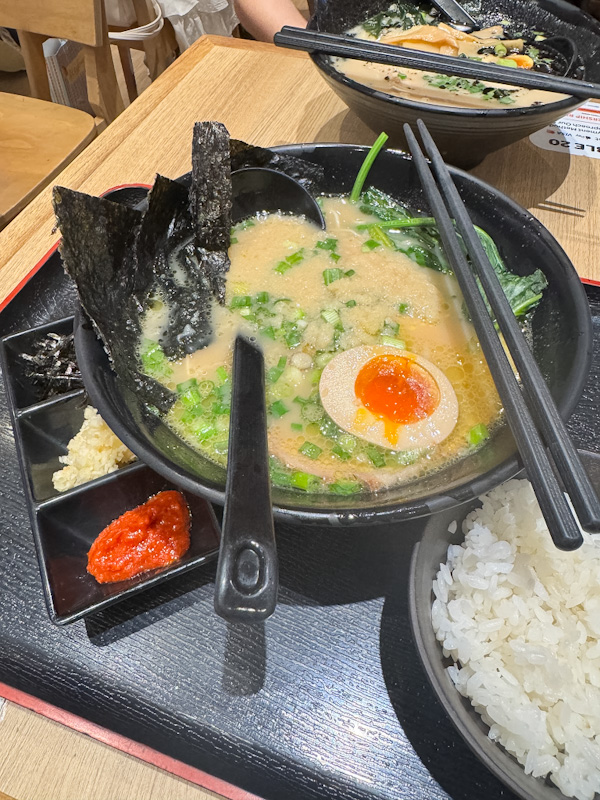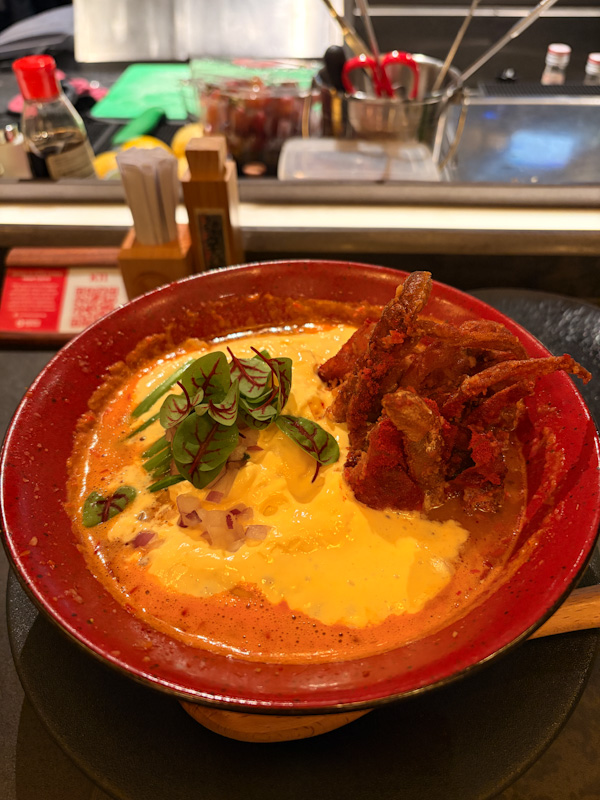WHAT WE ATE
- Karashibi Miso Ramen, 90/100 (20 Sep 2025, VivoCity)
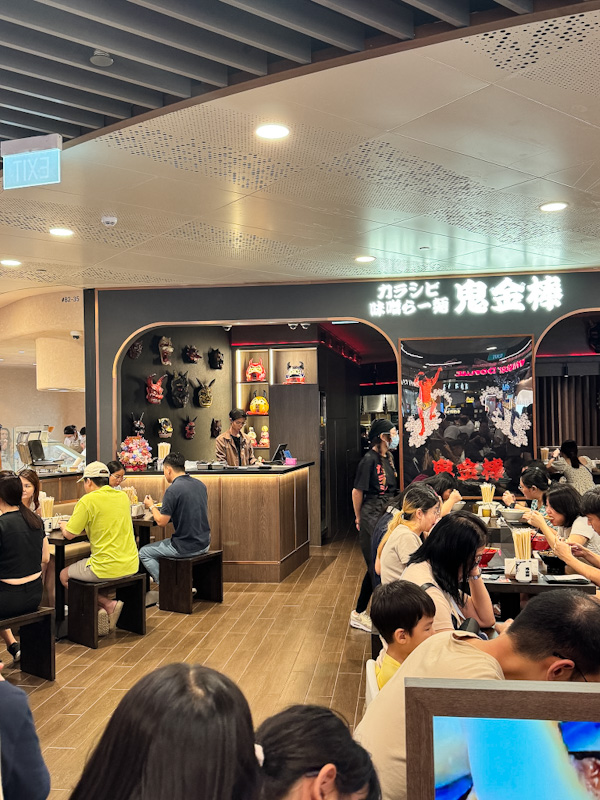
At VivoCity, Kikanbo Ramen brings Tokyo’s famous “karashibi” miso ramen to Singapore. The brand first opened in Kanda, Tokyo in 2009 as a modest nine-seater, before growing into a chain with outlets across Japan, Taiwan, Hong Kong, and now here.
Kikanbo is known for its fiery formula: “kara” (spicy red pepper) meets “shibi” (numbing sansho peppercorn), layered over a rich miso broth. Diners can adjust the intensity of both heat and numbness, choosing anything from a gentle buzz to full oni-demon strength.
Unlike its Tokyo flagship, though, my visit in Singapore didn’t involve dramatic theatrics or ritualistic fanfare — it’s very much a straightforward mall ramen shop. That said, the attention to detail shows up in their tableware, which stays true to what you’d expect in Japan and adds an authentic touch to the otherwise simple setting.
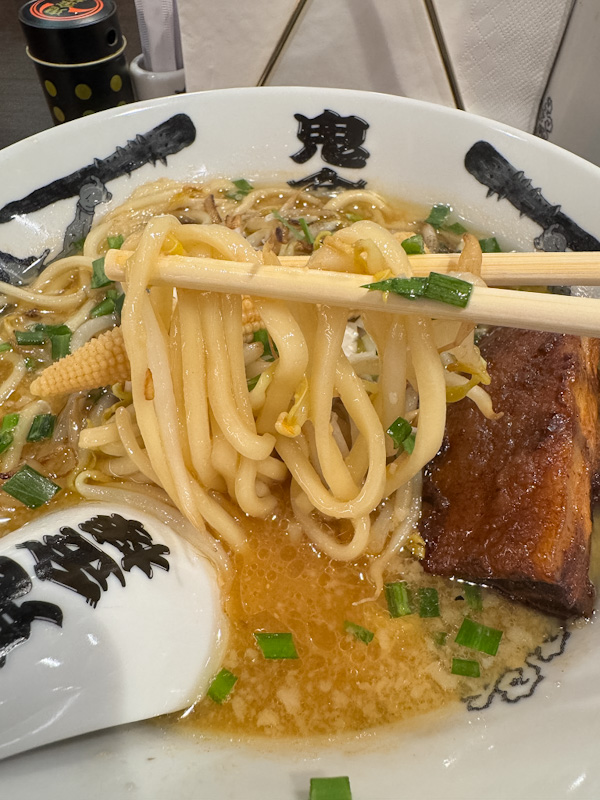
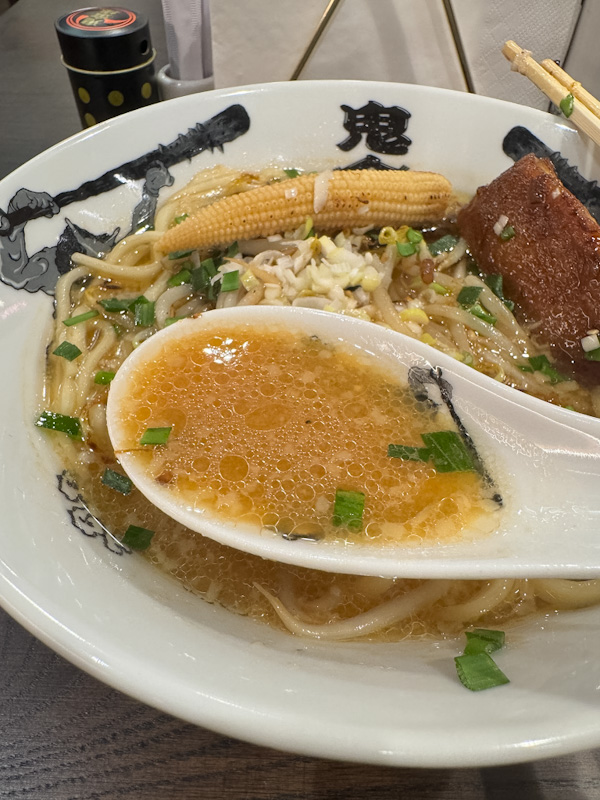
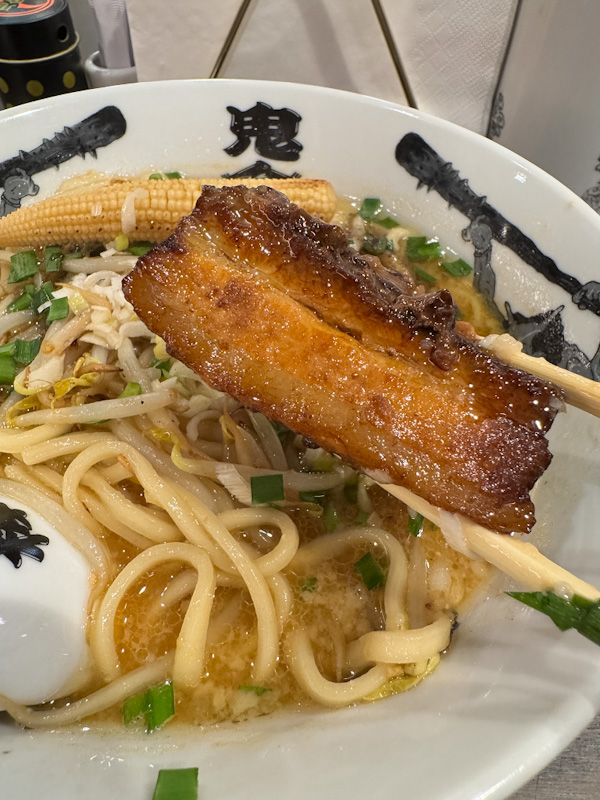
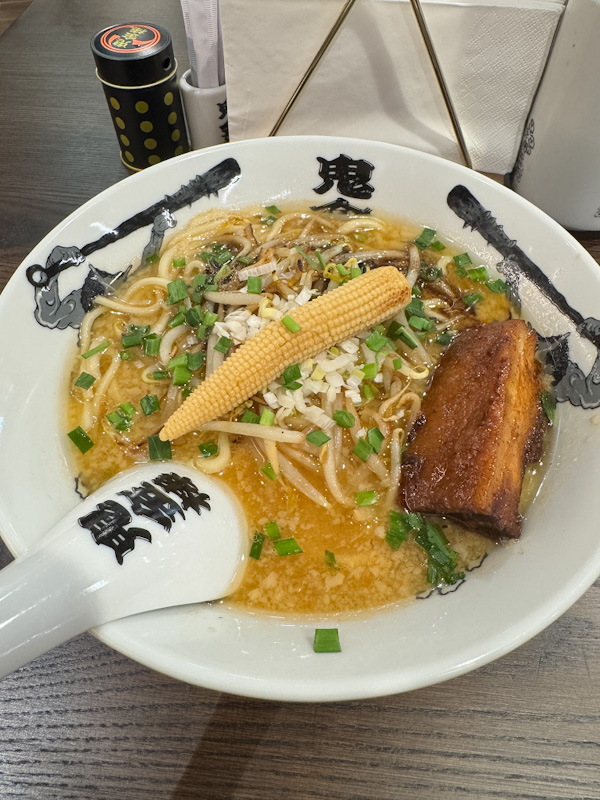
Karashibi Miso Ramen: 90/100
Noodle: 35/35
The noodles here are thick, flattish, and straight — a satisfying choice that diverges from the usual curly or fully mochi-mochi Sapporo miso type. Instead, these lean closer to what you might expect from Iekei ramen: medium hydration, chewy, springy, with just a touch of mochi-like bounce. The mouthfeel is hearty and substantial, each bite giving a firm resistance before yielding. Flavour-wise, the wheat shows up with a gentle nuttiness, clean and without distraction, pairing well with the broth’s density. It’s a noodle that carries its weight and doesn’t get lost in the soup.
Soup: 30/35
Kikanbo is famed for its punishing levels of chilli and sansho, but I opted to pare things back — no chilli pepper (level: none) and a restrained dose of sansho (level: less) — to better observe the broth on its own. The head delivers a clear savoury kick, before sliding into a nutty, slightly sweet body, then finishing with lingering miso umami. There’s a noticeable oiliness that clings to the palate, giving the broth a weighty texture. Separately, the flavours themselves are delivered in tightly packed bursts — each one rising, peaking, and dropping quickly, almost like a succession of small flavour bombs rather than a slow unfolding. The toned-down sansho faded midway through the meal, almost absent by the end — perhaps next time, a little more heat might make the ride even more exciting.
Meat: 15/20
The bowl comes with a hefty slab of braised pork belly, cut generously with both lean and fat. The fatty portion melts luxuriously, while the leaner section demands some chewing yet remains juicy. The braising leaves the meat slightly stringy, but it pulls apart without effort. On the palate, the marination is bold — a heavy interplay of sweet and savoury that continues to unfold as you chew. Toward the end of the meal, however, the richness edges toward greasy, slightly overwhelming against the broth.
Other Toppings: 10/10
The baby corn is the unexpected star — smoky, tender, with a fruit-tinged sweetness that makes it addictive in its own right. Negi, diced finely, is fresh but muted in this strong broth. The bean sprouts bring welcome crunch and juiciness, lightening the otherwise dense composition. Together, they complete the bowl with contrast and texture, with the baby corn easily earning top marks as a standout garnish.
Summary
Kikanbo’s Karashibi Miso Ramen strikes a balance between structure and spectacle: firm, satisfying noodles; a broth that is compact in its flavour sequencing; and toppings that carry enough intrigue to elevate the bowl. The pork belly is bold but a touch heavy, while the baby corn proves that even supporting elements can steal the show.
Sub note: This branch sits under the Next Shikaku group, which has so far impressed me with consistent quality across its outlets. Do be prepared for its popularity — the place is perpetually crowded, with long queues and wait times. I couldn’t even take a clear photo of the storefront without people getting in the frame.
DISCLAIMER
One man’s meat is another man’s poison.
Find out more about our palettes and how we evaluate our ramen here. 😉

